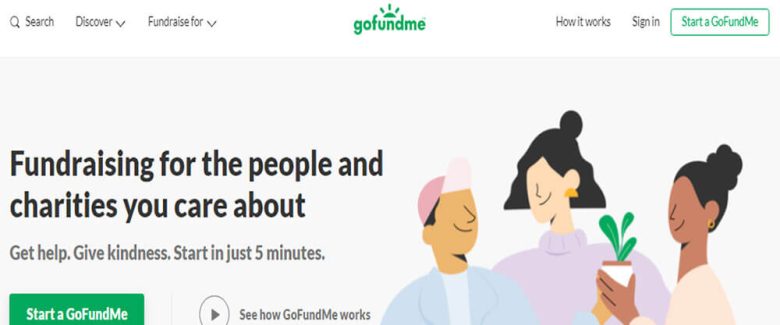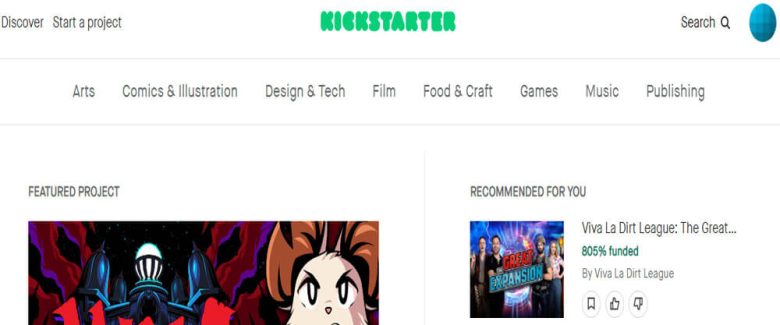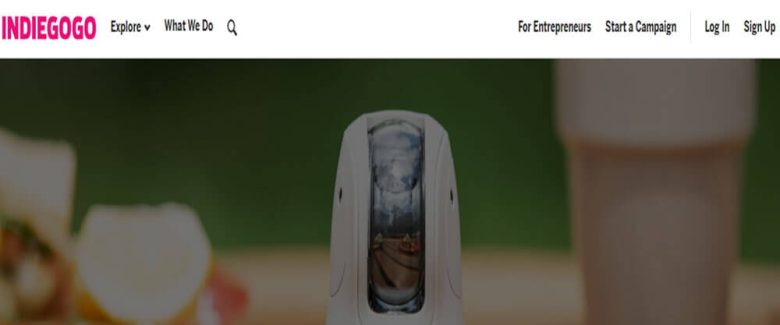Why Crowdfunding? In addition to funding, the tools below can engage new supporters, constituents, and future advocates. If it’s ideas you’re looking for, collaborative thinking can provide solutions faster and with input from people with diverse backgrounds, thus strengthening the project.
Also, by involving people in the early stages, they will feel more connected to the project, and likely repeat their support and advocacy.
Below, we’ll look at some of the best crowdfunding platforms on the web, along with successful campaigns funded on each one. Don’t forget that these tools are not your Field of Dreams answer — just because you build it doesn’t mean donors will come. You need to mobilize your friends, family, and constituents, and engage with niche communities online if you want to succeed.
1. Crowdrise
What: Fundraising
Why: Effective and entertaining
Who: Use it if you are a non-profit or individual supporting a non-profit
Yes, if you are reading this article now you have probably already heard about Crowdrise, but that’s because it works, and is easy to use. Charity: Water brought attention to this model of project-based, time-restricted fundraising, and Crowdrise has taken the best features of that and opened it up for any individual to support any charity.
As with most fundraising platforms, there is a fee, so find which option works best for you or your organization.
I can personally say that this tool has made my fundraising easier — I’m running the New York Marathon on Nov. 6, with a team to support the non-profit Camp Interactive, which provides inner-city kids with technology skills for the 21st century. It took just 30 seconds to set up my Crowdrise account as a part of my running team, which has also served as a creative and supportive group for fundraising.
My donors are appreciative of how easy it was to give, and it’s been fun to compete with the other members of my team. So far, the New York City Marathon has raised more than 3 million dollars on Crowdrise, with an ultimate goal of $26 million.
2. Kickstarter and IndieGoGo
What: Fundraising for projects
Why: Builds community and provides a reward structure
Who: Use it for any creative project
Both platforms are project-based fundraising sites, but they differ slightly. Kickstarter, which just recently reached 1 million backers, is for funding projects from the creative fields, from photography and film to publishing and technology. This is not the place to fundraise for a non-profit or cause.
IndieGoGo, which has more than 40,000 projects in more than 200 countries, is more lax in its requirements, specifically when it comes to causes. While both put time limits on your fundraising, IndieGoGo allows you to keep whatever you have raised, while Kickstarter requires you to reach your goal to receive the money.
Both also allow you to create your rewards and to communicate easily and frequently with your donors. Both have helped “art for social good” projects which have historically found funding difficult.
Furever, a feature-length documentary on animal taxidermy and coping with death, launched as a project on Kickstarter earlier this year with a goal of $5,000 to begin production. By June, it had surpassed its goal and raised $10,044. That funding allowed the project’s creator, Amy Finkel, to begin the project and eventually seek additional funding from foundations. She was recently profiled in The New York Times.
IndieGoGo has a slew of projects to support non-profits and causes, a notable one being the campaign for SlutWalk Seattle. While $1,000 is a relatively small amount of money, it’s all the team needed to host an event and raise awareness for rape crimes in Seattle.
3. OpenIDEO
What: Ideation
Why: Because more heads are better than one
Who: Use if you are an organization looking to solve a problem or an individual with an idea
The OpenIDEO platform is a way to include a broader range of people in the design process through brainstorms, conception, and evaluation. OpenIDEO partners with a non-profit to present the community with a social issue “challenge.” Community members then contribute to the process by providing feedback each step of the way until a solution is created and supported by the community.
Starting in January, OpenIDEO launched a one-year challenge: “How might we improve maternal health with mobile technologies for low-income countries.” Nearly 300 inspirational stories and ideas were initially shared, 20 projects were refined and 10 were named winners. Oxfam and Nokia have been prototyping and testing a combination of the winning ideas since June, updating the OpenIDEO community on their progress.
Other Notable Crowdfunding Platforms
1. ioby: This crowdsourced fundraising site encourages users to create, fund, and engage in local environmental projects. What makes ioby stand out is the local part. After you fund a local community garden, you can walk down the street and enjoy your investment. While this is currently only in New York City, expect the site to grow.
2. StartSomeGood: StartSomeGood connects social entrepreneurs with financial and intellectual capital. All projects address a social issue and provide rewards based on donation amounts.
3. Microplace: MicroPlace enables you to make investments in the fight against worldwide poverty. What makes it stand out from StartSomeGood is that you receive money back — you’ll receive quarterly interest payments, and when your investment matures, you can choose to get your money back or roll it over into another investment.
4. Sparked: Sparked is an entirely online volunteer network with more than 1,000 affiliated non-profits. These organizations post their needs online for volunteers to complete. Whether you have 10 minutes or 10 days, this is a much more productive way to spend your time than looking at your ex’s Facebook pics.
5. Ushahidi: Ushahidi is a non-profit tech company that specializes in developing free and open-source software for information collection, data visualization, and mapping. It was originally created to map instances of violence in Kenya in early 2008 but has since expanded to work on a range of projects, from human rights to software development. If you are crowdsourcing events or data, check out the CrowdMap.
6. Causes: With 140 million users and 30 million dollars raised, don’t count Causes on Facebook. Thanks to their fluid Facebook integration and Birthday Wishes campaign, Causes can still help non-profits pull in the green.
7. Advert Activist: This crudely put-together website has an interesting idea — crowdsourced funding for advertising and media campaigns for non-profits. Keep an eye out to see where this one goes. To make it easier for you to engage potential donors, using the best software for managing donors for nonprofits and charities will help you take the guesswork out of donor outreach.






